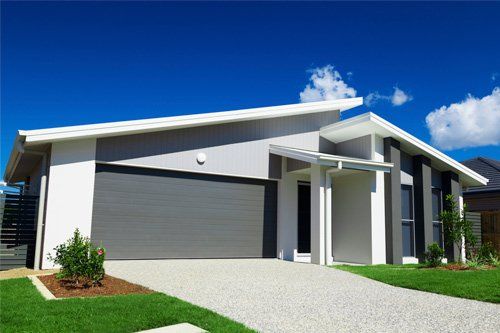How to Prevent Drainage Problems on Flat Roofs
- By Admin
- •
- 21 Feb, 2019
- •

Drainage issues are some of the most common problems with flat roofs. However, you don't have to resign yourself to drainage problems just because you have a flat roof. The following measures will keep drainage issues away from your flat roof.
Get an Efficient Drainage System
The first step is to ensure the roof has a well-designed drainage system. The drainage system must be able to handle the volume of water the roof can collect during a heavy downpour or snowfall. The capacity of the drainage system depends on the size of the roof, the pitch of the roof, and the rainfall characteristics of the area.
For example, most flat roofs rely on scuppers (where the water exits through a metal edge) to drain away water from the roof. The scuppers must have the right diameters if they are to handle all the water from your roof. The drain domes (that trap debris to avoid drain clogs) must also have the right-sized openings.
Keep the Deck Clean
Even with a well-designed drainage system, your roof risks drainage issues if you don't keep the roof deck clean. If the roof deck is full of debris, the dirt will end up in the drains and cause drainage. Typical debris like windblown debris, dirt, and organic matter from trees (leaves, seeds, and flowers, among others).
Even the best drain domes will clog up if your roof has too much dirt. Therefore, clean your roof deck regularly to avoid blockages. Trim trees around the house so they don't deposit their organic matter on your roof.
Unclog the Drains Regularly
Some dirt will inevitably get into your roof drains and clog them even if you keep the deck clean. Therefore, you should unclog the drains regularly to ensure proper water flow at all times. Don't forget that even partial blockage of a drain is a problem since it reduces the effective diameter of the drains and with it the drainage efficiency.
Ensure Proper Roof Pitch
A flat roof should have a little pitch to help water flow across the roof into the drainage channels. If the slope is too low, then water won't flow across the roof and you will have water pooling issues.
The contractor determines the pitch of the roof during the installation. As such, you don't have to worry about the wrong pitch if you used a professional roofing contractor to install the roof. However, DIY roofing work or renovation can easily mess up with the roof's pitch so you should avoid them if you don't have the right skills and experience.
Deal With Depressions and Sagging Issues
When a roof begins to sag or develops depressions (low spots) will also have drainage problems. A roof may sag if it is old and the support structures are corroded or rotten, if the roof is overloaded with weight (such as snow), or if the roof has experienced accidental damage (such as tree damage).
Low spots may develop due to accidental damage or frequent foot traffic over the same areas. Correct such anomalies to encourage efficient drainage for your flat roof.
Get Rid of Obstructions
Lastly, you also need to worry about roof objects that may interfere or block the flow of water in the roof. Roof installations, particularly those that nonprofessionals install, are common culprits in these problems. Ensure rooftop HVAC (heating, ventilation, and air conditioning) units, communication antennas, vents, and other objects don't block water flow.
Hopefully, you won't have to deal with drainage problems for your flat roof. Contract Cal Roofing Systems Inc. for all your roofing needs to ensure that is the case. We can also help you deal with drainage problems that your roof has already developed. Contact us today for a quote for all your roofing needs.





